
“We still do not know one thousandth of one percent of what nature has revealed to us.”
– Albert Einstein
Prologue…
I trudged up an old, narrow and creaky staircase to my first appointment with a new therapist. The house was an old, haunted-seeming place that had been converted to office space for a practice of counselors. It existed right on the edge of West Hartford Center in West Hartford, CT – an old colonial house just past the edge of modern, hip and moneyed West Hartford Center. This therapist came highly recommended by a woman I trusted and respected and our initial phone conversation went well. I was hopeful that this work would help me to find answers to the mysteries of my life at that time.
Of course, I was intent on controlling the process the entire way…
I arrived with a stack of paper notes, a few books and my then-new Dell laptop. Microsoft Word was open before I tucked the computer into my bag and it was all queued up with a new document called “Therapy” or some such silliness. My Word doc was full of bulleted lists and an outline for what I wanted to address in therapy. This is what happens when a science and engineering educated male decides to “fix” himself, his health and his life – laptops, lists, bullet points, data and books. Lots and lots of books.
Of course, none of this turned out as I expected. I knew I was in for an intense ride when I settled myself into a comfortable office with a nice couch, plenty of books and Native American art and artifacts all around. I had all my papers next to me and my laptop on my lap with the monitor up – like armor protecting my body.
My new therapist’s first request of me was: “Can you do me a favor? Can you just take all that stuff and put it over there?”
I obliged her. I gathered up all my protective armor – books, computer, notes, designer computer bag – and set it to the side. I sat there on the couch feeling naked and vulnerable without my lists, notes and technological weapons. This was going to be pretty typical of the work I did with “Lydia” over the course of six months or so. A continual exploration of things I didn’t really want anything to do with, but was gamely agreeing to tolerate out of both desperation to heal my broken body and life and a dim, internal awareness that I needed to be less analytical, left-brained, rigid and, well, less “scientific.”
It turned out that Lydia was both an actual counselor with “traditional” degrees, training and certifications. She was also trained in Native American Shamanism, Jungian Psychology and other more mystical and intuitive practices. Over the course of my work with Lydia – and throughout the coming years – I would continually encounter things that were both “unexplainable” and completely “real” at the same time. I did inner child work, past life regressions and soul retrievals. Several times I was followed home by (usually) benevolent entities who would hang around – as if to tell me something – and then leave when I progressed to my next inner lesson. I had strange dreams, unpredictable and intense emotions and generally had both a good and bad time of it all.
It was hard work, but it was very important work for me to do.
A Winding Path Toward Wholeness…
It’s over 10 years ago now that I started down a path toward recovering my health and healing my life. It’s been a challenging and detour-filled journey. When one embarks on a path toward healing a whole life, there are very few stones left unturned and few ideas not explored – at least in a rudimentary way.
When we initially set out to heal ourselves and our lives, we very often have a narrow, exclusive and one-sided view of both the problem and the mode or modes of treatment. It’s that old joke about if you’re not healing you should just “Paleo harder.”
But this is what we all do at many points on the journey. Especially in the Paleo community, we make diet the major issue to address. Then we sort of tack on the added areas of sleep, stress and a loosely-defined “lifestyle” focus as the additional keys to focus on to maintain or recover health. This is good because these “other” issues are certainly major factors on the road to health and it’s highly unlikely if not impossible to regain our health without these pieces in place.
But there’s so much more to our individual healing puzzles than just food and sleep. And what is “lifestyle” anyway? If our days or weeks include spiritual practices, rituals and routines, doesn’t that fall into the “lifestyle” category too?
There’s a bigger context in all of this and Paleo eating and living is a large part, of course. And I’ve found that Paleo can serve as a gateway to these other ideas in many ways. As an example, many Spiritual thought leaders talk about eating whole, unprocessed and organic foods. But, this idea of eating and living “Paleo” can open new doors and lead us down a path to new ideas and things to explore.
So here, Paleo dovetails right in. We have to keep our body, our digestion and our brain healthy with great food before we can hope to make dramatic spiritual progress.
On the opposite side of this Paleo diet and lifestyle coin though, it’s naïve to think that only diet and basic lifestyle factors are enough to heal us fully from significant, chronic illness. And, chronic illness aside, I think that the rigors and complexity of 21st century life in general necessitate a more holistic, integrative and spiritual approach to create a whole, successful and rich life.
The days of “Leave it to Beaver,” church on Sunday and Wonder Bread are over and never coming back. I said it in Paleo Magazine a few years ago: “Alternative lifestyles are all we have left here in the 21st century.” We have to find alternative ways of thinking, living and interacting with an increasingly complex and ever-changing world.
Exploring a “New” Definition of “New Age…”
Wikipedia begins its entry on “New Age” with:
“The New Age movement is a non-religious spiritual movement that developed in Western nations during the 1970s. Precise scholarly definitions of the movement differ in their emphasis, largely as a result of its highly eclectic structure.” ( https://en.wikipedia.org/wiki/New_Age )
The “eclectic” part of it is what I think makes the broad idea of a “New Age Spirituality” so ideal for the 21st century.
Like our healing journey, the development of a personally meaningful spirituality isn’t a straight path or an easily-packaged thing.
It’s easy to get thrown off by the “spiritual” moniker. Please don’t. A 100% practical and left-brained individual can still undertake a yoga and meditation practice – for highly practical reasons and with completely tangible results. As with everything I personally practice, results are always the name of the game and the standard by which I evaluate the choice to include it in my life and my healing practice.
Finding a “Practical” Spirituality…
For me, every last bit of this Spiritual exploration within my healing journey has been practical. If some good food and extra sleep had been what it took to make me fully healthy again, I likely never would have explored these deeper, esoteric and tangential topics. The simple, practical fact of it all has been that these ideas have helped me along on my journey and were necessary to move on to the deeper levels of healing my life.
It’s all been 100% practical.
I wasn’t always a spiritual person. In fact, I was about as unspiritual as you could get when I was in my 20s and early 30s. Some of this was from being science educated and, maybe more so, from being a big reader of Ayn Rand’s work in my younger years.
But to me, this actually makes my current interest in spirituality more important and lends more credibility to the ideas I’ve found, formed and applied to my own health and healing. It’s one thing to always believe in this stuff. It’s another to evolve over time and come to understand that there’s more to life and health than surface-level things, black and white answers and hard data. Of course, data, objectivity and basic common sense mean a lot to me still. It’s not that I exclude hard facts or science as some New Age healers and devotees might, it’s more that I include spiritual and New Age ideas where they make sense and help me in this lifelong healing journey.
My Major Spiritual Practices and Areas of Exploration…
The following are the major spiritual ideas and practices that have been instrumental to my own healing journey and are areas I recommend others explore on their own personal quests for health and healing.
These are particularly important as we move on to deeper levels of healing our bodies and our lives. When we have the basics down and need to dig deeper to get where we want to go, these are some of the places to start digging…
Yoga and Meditation…
Yoga and meditation have been two of the most important practices I’ve ever incorporated into my life. I started doing yoga back in 2007. By 2009 I was well aware that yoga was having a significant calming and healing effect on my body, mind and spirit. Incidentally, 2010 – which was a time of dramatic change and growth in my life – was also the period where I was doing the most yoga and mediation I had ever done to that point (once daily and virtually every day) and also the first time I had read “The Power of Now” by Eckhart Tolle.
Yoga and meditation are both very “physical” practices in that they affect body and brain in measurable, tangible and physical ways. They are also “spiritual” in that they can create, build and allow a strong “inner stillness” that can help us to access a more deep, intuitive and metaphorical place that exists within us always, but that we’re less aware of until we slow down during the practice of yoga and meditation.
My absolute favorite DVD for home yoga practice is “Yoga on the Edge” by Sarah Ivanhoe and my favorite artist for guided meditations is a guy called Hypnotica. My two favorite guided meditations from Hypnotica are: “Metamorphosis” and “Yoga Nidra.”
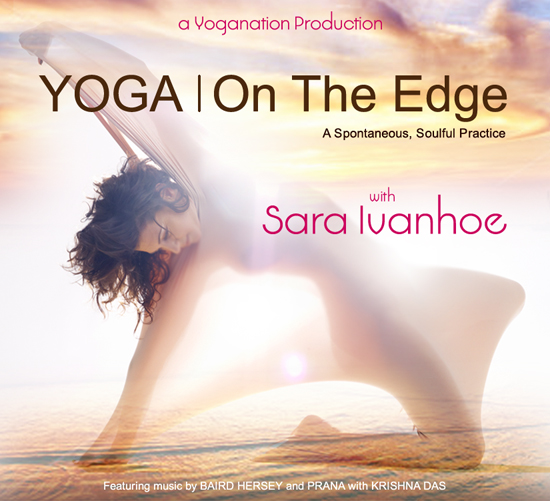
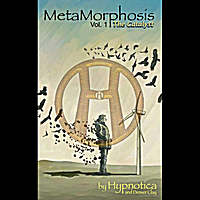
I currently use the “Yoga on the Edge” DVD almost daily and usually use the “Afternoon” practice on that DVD to wind down toward the end of the day and before dinner. I follow my yoga practice with a regular “breathing meditation” as opposed to a guided meditation.
In general, though, I recommend two important things for people new to meditation or who have trouble with it:
- Meditation after yoga is much, much easier. If you have a hard time sitting still for a 10-20 minute meditation session, try doing yoga first. You’ll likely find it’s much easier to sit for meditation after yoga than it is before.
- If you want to really make your meditation time easier, try guided meditations for a while. These act as “training wheels” that help you relax, require no real input or effort on your part and can sort of “idiot proof” your meditation and help get the habit ingrained.
Chakra Healing…
I’m currently working on an entire blog post series about the chakras and using the concept of the chakras in healing. It will be linked here when I have Part 1 posted. Briefly, the chakras are theoretical (and, quite possibly, real, physical and tangible as well) energy centers within the body. Each chakra corresponds to a different position in the body and to a variety of physical, developmental, spiritual, archetypal and psychological images, issues and challenges.

By understanding which chakras are involved in our current life and healing challenges, we can work with them individually and overall to heal them and integrate more of our life lessons and fractured parts of our personality to reach a higher level of health, wellness, wholeness and understanding.
My absolute favorite book on chakra healing – and the best overall reference for grounding the idea of chakra study and healing into a western and established psychological context is the book “Eastern Body, Western Mind” by Anodea Judith. And, a great compliment to the Judith book is “The Book of Chakra Healing” by Liz Simpson. These two books compliment each other, reinforce each other and each offers something unique on the chakras that becomes a nice, integrated whole when used together over time.

“Working” with the Chakras…
If the chakras are these “intangible” and invisible energy centers within the body, how do we “work” with them in a concrete and tangible way? It turns out that there’s a very robust body of knowledge regarding the chakras and chakra healing or “balancing” and most of it is in general agreement across different authors and theoretical constructs. (The remaining differences in opinion or practice that I’ve run across I’ve found to be enhancing to my practice as opposed to confusing or limiting.) The above two books are both excellent starting points and can really be endpoints also. Those two books constitute the majority of my study of the chakras with a few others (Notably “The Vital Psoas Muscle” by Jo Ann Staugaard-Jones) filling in some smaller details and offering different ideas, opinions and practices.
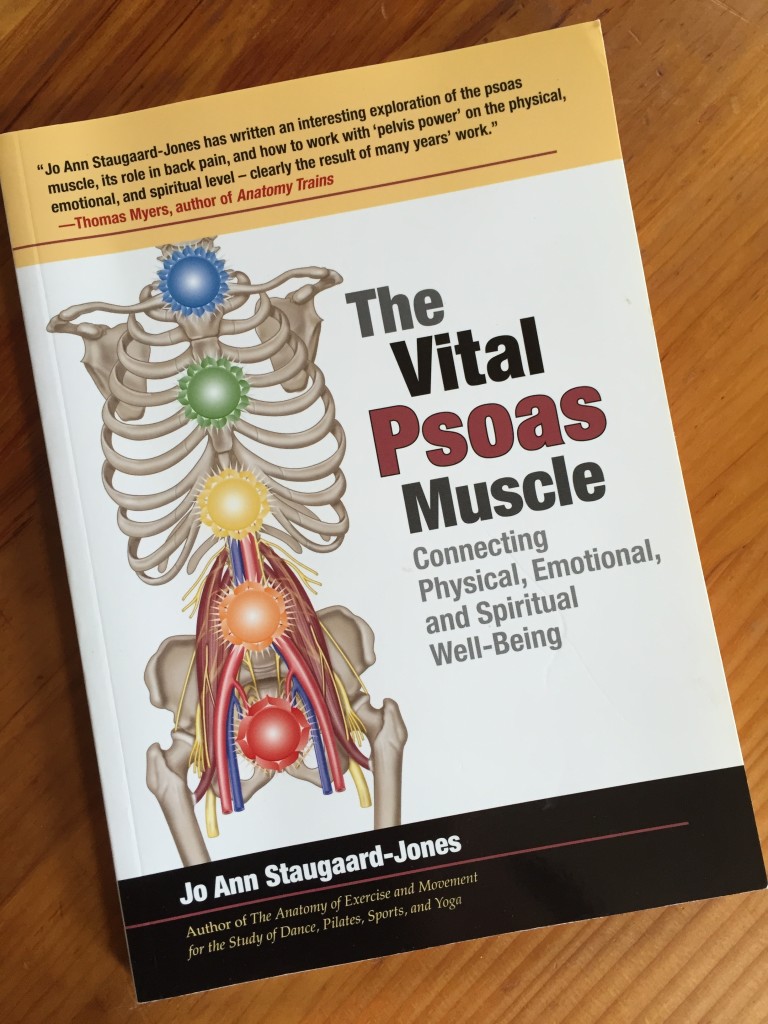
Essentially, “working with” the chakras means performing exercises and movements generally regarded as healing or “balancing” to the particular chakras we’re working on. It can also include undertaking, eliminating or modifying activities or practices as well as making changes to our external environments. It can also include exploring mythology, symbolism, art, color, animal images and other less-tangible things.
But, generally, when we determine the current state of each of our chakras using a reference like Judith as a guide, the work we undertake is essentially practices and exercises that rebalance the parts of ourselves that are overdeveloped, underdeveloped or dysfunctional.
Note that the process I’m describing above is taking a theoretical and mostly intangible concept – the chakras and chakra healing – and relating it to actual, tangible physical steps and practices. I can’t overemphasize the importance of this. This is the grounding of a spiritual and esoteric idea into real, physical terms and parameters that we can work with and manipulate.
Tarot…
This is an interesting one. Tarot was one of the last things I ever thought I’d get into years ago when I’d hear people talk about it. Scientists – and rational people in general – don’t believe in “psychics” and other such nonsense. Certainly, using cards to “predict the future” is a silly and self-indulgent waste of time, right?
As I’ve spent more time delving into the work of thought leaders in the health and spirituality genre, I’ve found common threads and connections and followed them down whatever path they may lead me. Many of these threads and paths have coalesced and I’ve seen connections that make me think there’s plenty of value in working with Tarot cards and imagery as a path to healing.
Tarot and The Journey of the Hero…
Putting aside the deeper aspects of Tarot and having a full reading done by a skilled individual, the cards can offer very interesting and useful perspective when worked with in terms of “The Hero’s Journey” and in a casual, personal and exploratory way.
The Hero’s Journey is a universal and timeless motif woven within story and myth. In modern times, the work of Joseph Campbell has elucidated much of the ideas of the mythical journey of the hero and, more famously, George Lucas has acknowledged that he based the original Star Wars trilogy on The Hero’s Journey format . It’s a timeless story pattern that repeats in myths and stories that span time, culture and geography.
My favorite resource for interacting with the Tarot Major Arcana in terms of The Hero’s Journey is “Tarot and the Journey of the Hero” by Hajo Banzhaf.
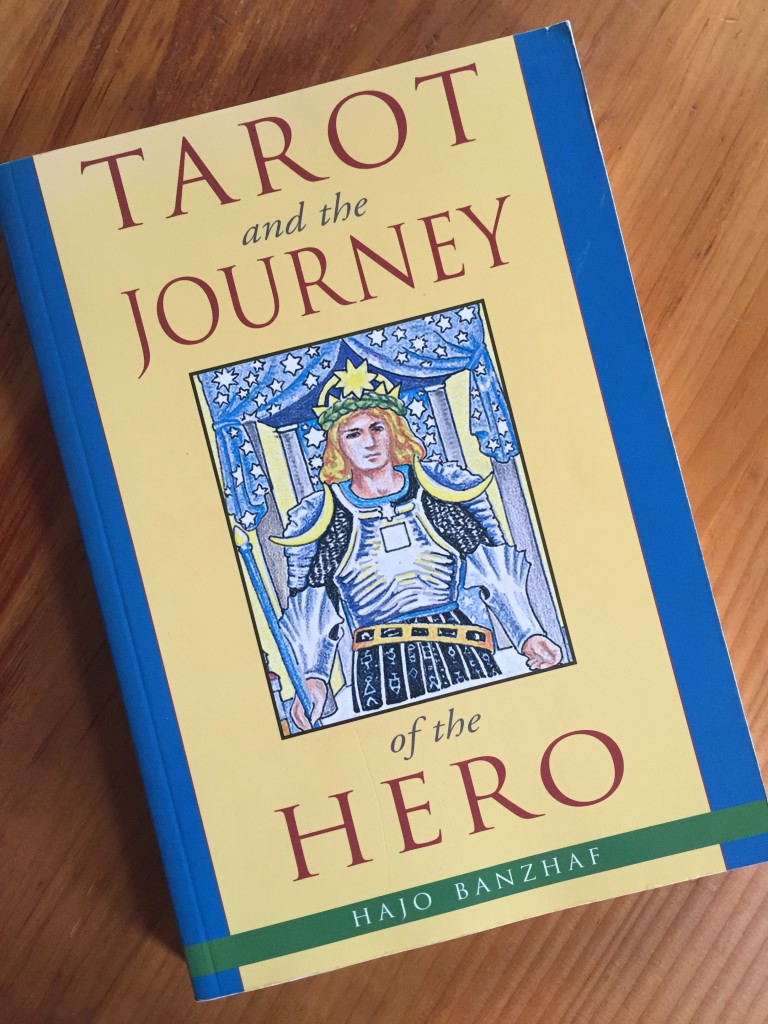
Working with Tarot cards for your personal healing – and in the context of The Hero’s Journey – is simply working with the understanding that the Major Arcana form a cycle when arranged counter-clockwise from 0-21. Understanding where you are in this cycle within your entire life, the different parts of your life, the numerical days, months and years you find yourself in, etc. can be highly valuable.
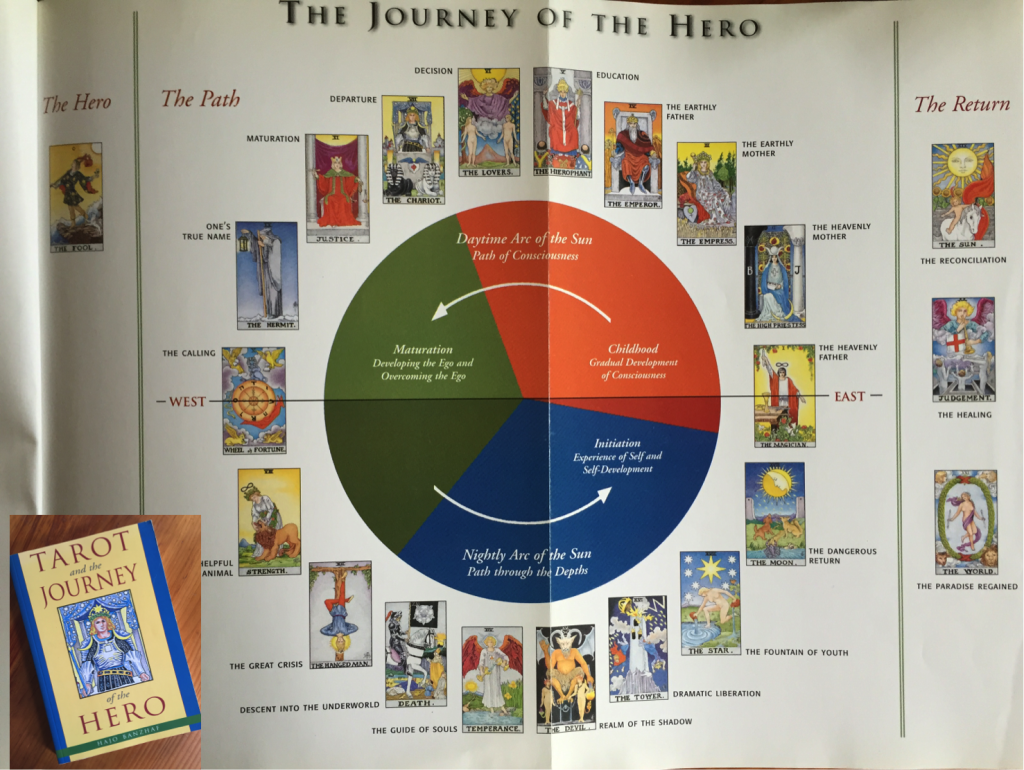
For more on this, you can also check out the chapter “Experiencing the Tarot” in “Tarot for Dummies” by Amber Jayanti which describes how to work with the Major Arcana to find your Soul Card, Year Card, etc. This chapter – and both of these books – can help you use Tarot as a metaphorical map to figure out where you are and where you may want and need to go.
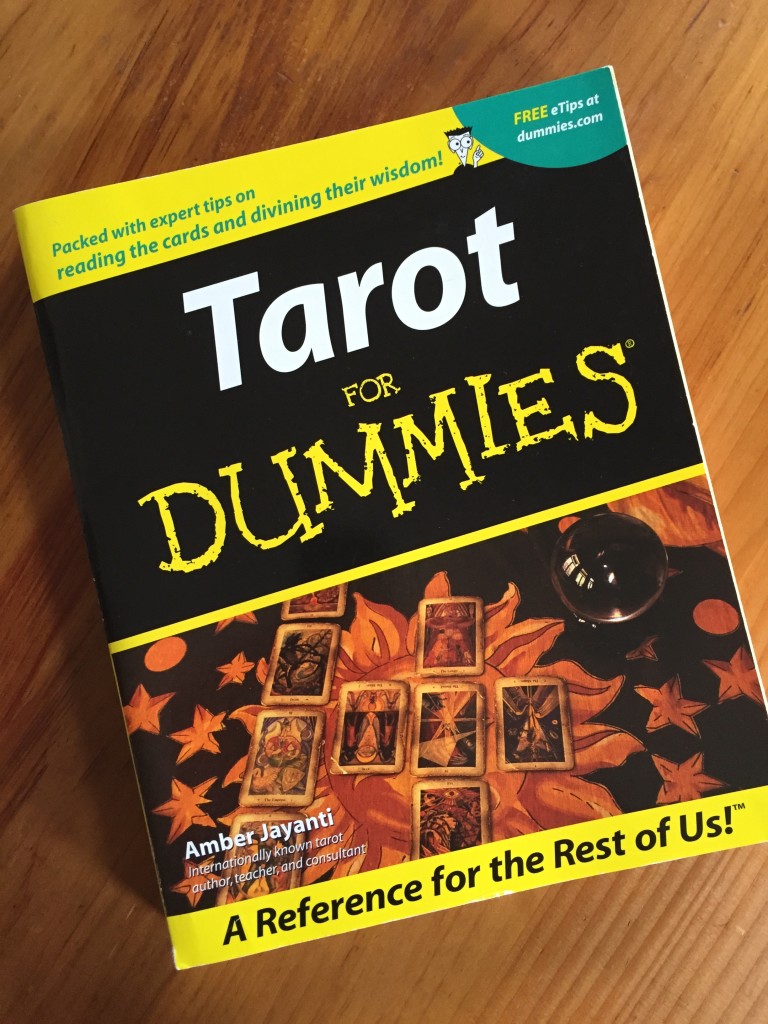
The bottom line with Tarot and The Hero’s Journey is that knowing where you are in the archetypal and metaphorical cycles of your life can give you both clarity and direction. It’s a way of seeing where you are on a “map” that is high-level and metaphoric and quite universal.
Archetypes, Myth and Story…
As I alluded above, the Tarot cards have a tremendous amount of archetypal imagery and symbolism. Swiss psychologist and psychotherapist Carl Jung brought the idea of archetypes into more or less common usage. And the work of Joseph Campbell connected us to the idea of timeless and universal myths and stories that contain within a universally human structure for life, living, growing healing and being in the world.
So, herein is a connection between Tarot, psychology, spirituality, The Hero’s Journey and ancient myths and stories handed down throughout human history and across cultures.
By understanding the universal patterns and structures from which our individual human life experiences are manifested, we can elevate our consciousness and find greater meaning and deeper understanding of our circumstances, life patterns and experiences.
One of the best resources for working with archetypes within the context of a healing journey is the book “Sacred Contracts” by Caroline Myss (Her name is pronounced “Mays”).
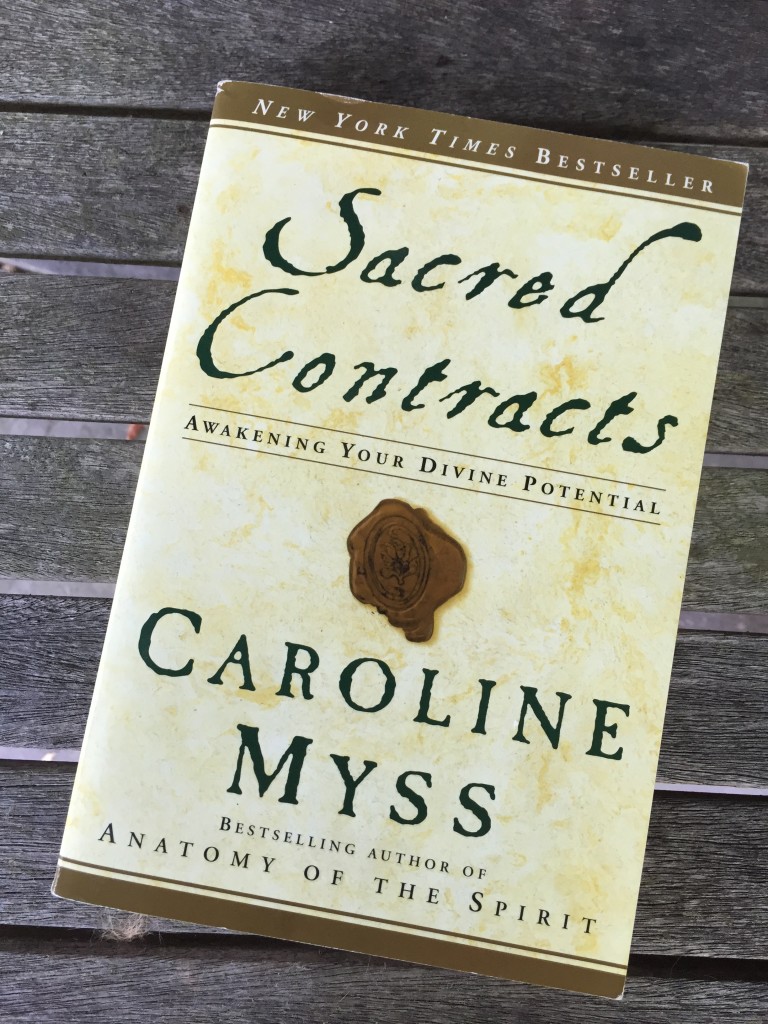
From the back cover of “Sacred Contracts:”
“New York Times bestselling author and medical intuitive Caroline Myss has found that when people don’t understand their purpose in life the result can be depression, anxiety, fatigue, and eventually physical illness – in short, a spiritual malaise of epidemic proportions. Myss’ experience of working with people led her to develop an insightful and ingenious process for deciphering your own Sacred Contract – or higher purpose – using a new theory of archetypes that builds on the works of Jung, Plato, and many other contemporary thinkers.”
Because archetypes, myths and stories are abstractions of human characteristics and experience, they can elevate our perceptions and allow us to understand our individual experiences in a more metaphorical way. This can allow us to gain a clearer picture of what the events and experiences in our lives mean – and inform our reactions, behaviors and decisions – by helping us see a larger picture of our circumstances and life patterns.
Personally, when my healing or life is stuck, I very often retreat into a highly contemplative mode and explore universal templates like archetypes and story through the more spiritual works of authors like Myss to gain perspective and decipher my experience.
Conclusion…
In this post I deliberately put out some of the more “out there” ideas and practices I’ve encountered and experienced on my healing journey. These are some of the more “advanced” and “intangible” tools in my personal toolbox. I wanted to share them here to give you some deeper ideas for investigation as your own journey unfolds.
If you enjoyed this post and got value from the ideas, please be sure and leave a comment to let me know!
ttys
Adam
Reading, Watching and Listening…
- “Eastern Body, Western Mind” Book by Anodea Judith
- “The Book of Chakra Healing” Book by Liz Simpson
- “Sacred Contracts” Book by Caroline Myss
- “Anatomy of the Spirit” Book by Caroline Myss
- “New Age” Entry on Wikipedia ( https://en.wikipedia.org/wiki/New_Age )
- “The Vital Psoas Muscle” Book by Jo Ann Staugaard-Jones
- “Tarot for Dummies” Book by Amber Jayanti
- “Tarot and the Journey of the Hero” Book by Hajo Banzhaf
- “The Power of Now” Book by Eckhart Tolle
- “A New Earth” Book by Eckhart Tolle
- “Yoga on the Edge” DVD by Sarah Ivanhoe ( http://www.yoganation.com/dvds-media )
- “Metamorphosis” Guided Meditation by Hypnotica ( http://www.cdbaby.com/cd/hypnotica5 )
- “Yoga Nidra” Guided Meditation by Hypnotica ( http://www.cdbaby.com/cd/hypnotica6 )
Great article Adam! It takes a lot of courage to open up the way you did in that article and I really admire you for that. I too am a big fan of Eckhart Tolle, Anodea Judith and Carolyn Myss. I have found that her lessons in Sacred Contracts and the language of archetypes have helped me have a broader understanding of the things that have happened to me in my life, the choices I have made, and therefore not to be as reactive as I used to be. As I become less reactive, I am better equipped to handle things and to turn them around so that they actually benefit my life and help me grow. I commend and honor you on your journey and I look forward to more articles like this one.
Thanks so much, Irene! I really appreciate it! I’m also finding that looking at things in terms of metaphor and “The Hero’s Journey” puts me in a “higher” place when looking at events and puts me more in a space of “learning the lesson” as opposed to dwelling on “failures” or “problems.” It’s a practice for sure.
Great to know there are others for whom this stuff resonates with! 🙂
Adam
Thanks so much for this! It was such a timely read for me because I have only just recently come out of the closet a bit from a professional standpoint and begun integrating elements of my spiritual practice (lifelong neopagan, shamanic practitioner, 20 years of reading and working with tarot/palms/Elder Futhark runes) into my coaching practice. I’ve been coaching less than a year, only meditating for about a year, doing yoga for about a month, and chakras are completely new to me so I have added lots of stuff to my reading list based on this post! These are all such fantastic tools for healing and you are so right that rarely does ONE single approach really do the job. Thanks so much again, such a great read and so refreshing to see people talking about these alternative approaches to healing.
Thanks, Kathy! So glad you enjoyed it and found some new paths to try out.
So funny because I’ve been using runes forever too. I took them out of this one because it was getting so long. What rune books do you like?
Adam
I think my favorite rune book of all time is Freya Aswynn’s Northern Mysteries & Magic. But I also love Jon Saint-Germain’s Runic Palmistry, which combines those two disciplines in a way that really improved both my rune and palmistry skills. Oh, and I meant to mention another tarot book that’s really fantastic, particularly if you’re using the cards for your own self-knowledge and not so much reading for other people — Mary K. Greer’s Tarot For Your Self. It’s a workbook with exercises (meditations, visualizations, journaling, etc.) meant to deepen your self knowledge through the use of tarot archetypes. I’m working my way through it right now for the second time. Really great stuff!
Adam, I’m just curious if you are a Christian?
I’m not Christian, Tammy. I’ve been exposed to Christianity and Judaism through my family but neither “took.” I always felt more drawn to Eastern ideas and then later got into New Age stuff.
Adam
How timely! I myself, just began reading about Chakras last week. I’ve been trying to meditate for a couple months, but can not get my mind to “Shut off”. A friend has suggested Yoga, which I really need to make time to go try the class.
I’m enjoying my reading on the Chakras – one quiz said ALL mine were closed! LOL I’ll try the books you recommended. Thank you!
So glad it was good for you, Beverly!
Definitely try that yoga DVD I mention – it will get you to most of the benefits of a class without the hassle of going to a class.
Good luck!
Adam
My shoulders dropped and I felt myself breathing deeper, and so much more relaxed, while reading your post. Amazing. Thank you for sharing.
Ellen
So glad, Ellen! Thanks for letting me know!
Adam
Hi Adam,
I really love how you look at all aspects; body, mind, & soul in finding a balance for healing and happiness. Thank you to for including all the various literature that have helped, influenced, and inspired you. I definitely intend on looking into some of these books. You’ve reminded me to also look to all of these different areas for my own healing (6 years with ulcerative colitis). I’m beginning to see that if I hope to heal I’m going to have to start taking care of myself first and not everyone else.
Thanks for all you do! I have you’re books and read all of your articles in Paleo magazine. I live near W. Hartford and would love to know who you go to for therapy. She sounds great!
Hey Debbie!
If you’re “taking care of everyone else” and not putting yourself first, check out the resources listed in my Paleo Magazine article on Burnout. I believe it was July/Aug 2015.
I’ll email you with the name of the practitioner in West Hartford!
ttys
Adam
Thanks so much Adam. I’ll find that issue and reread the article.